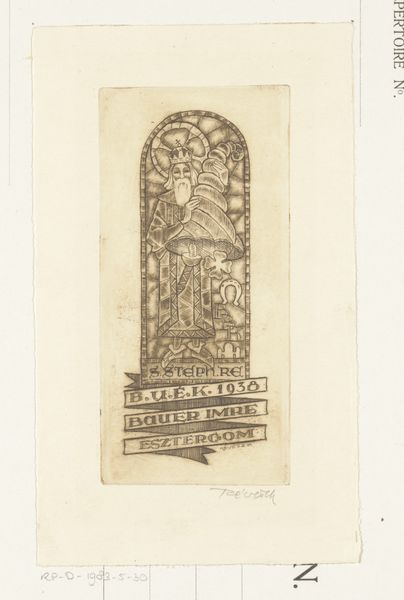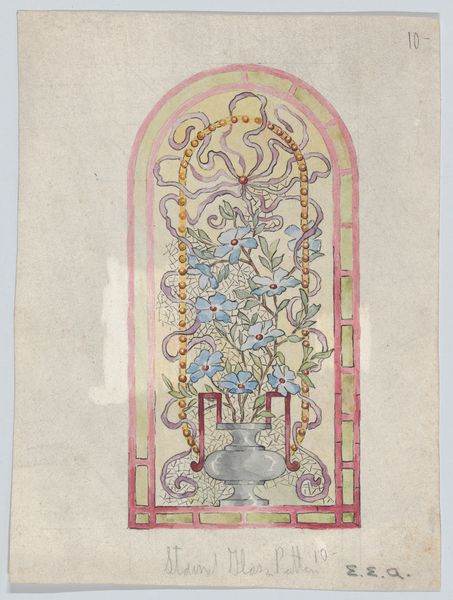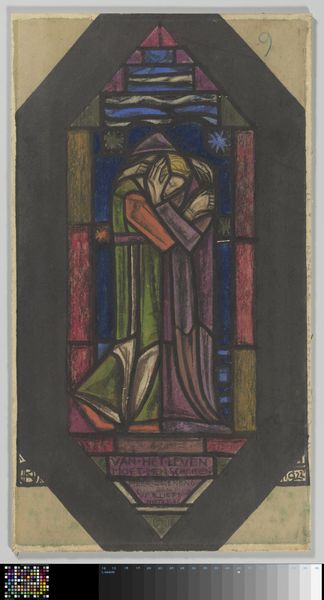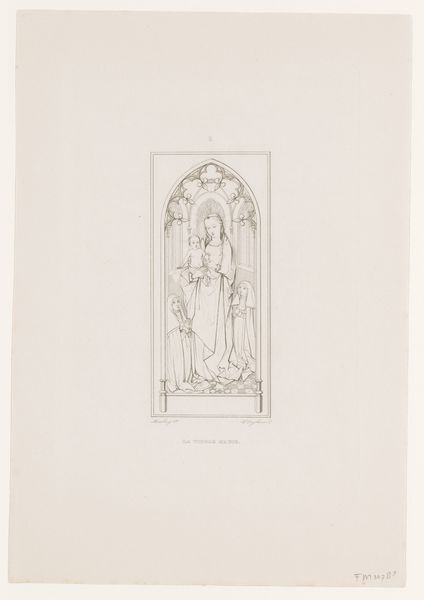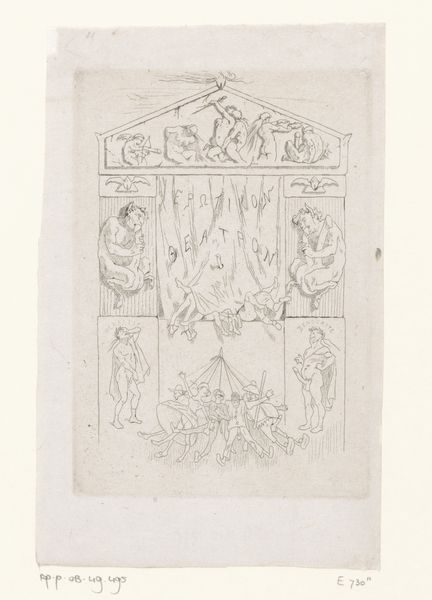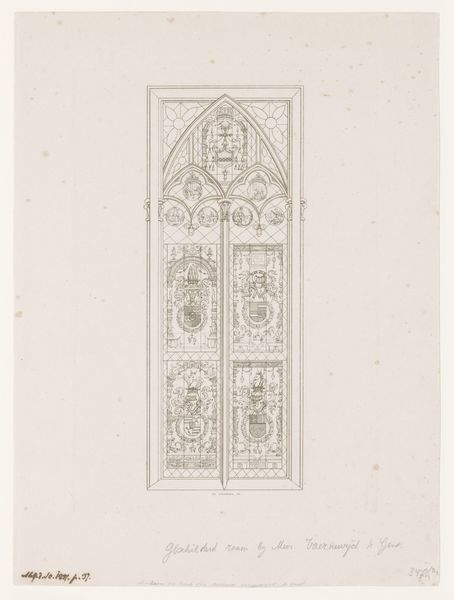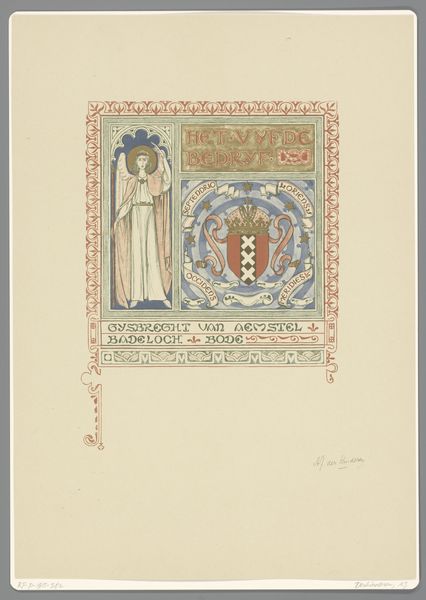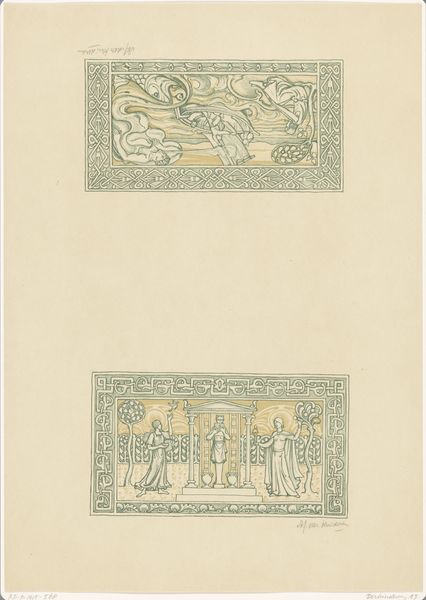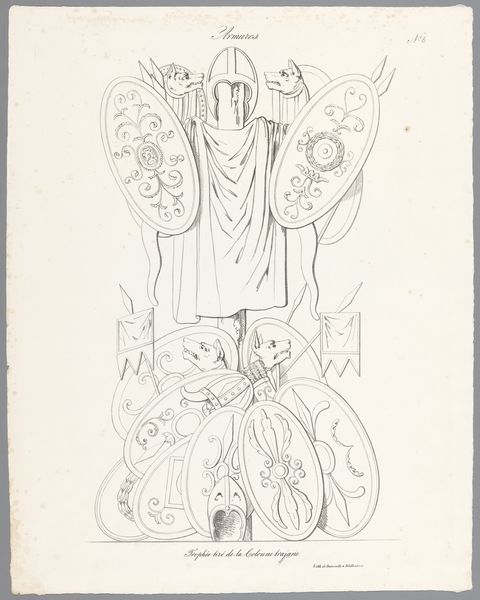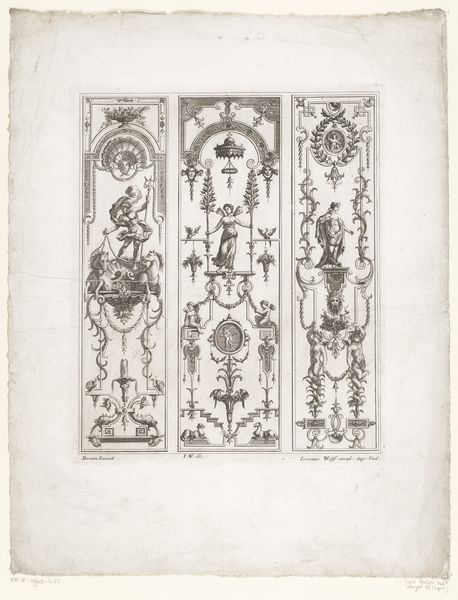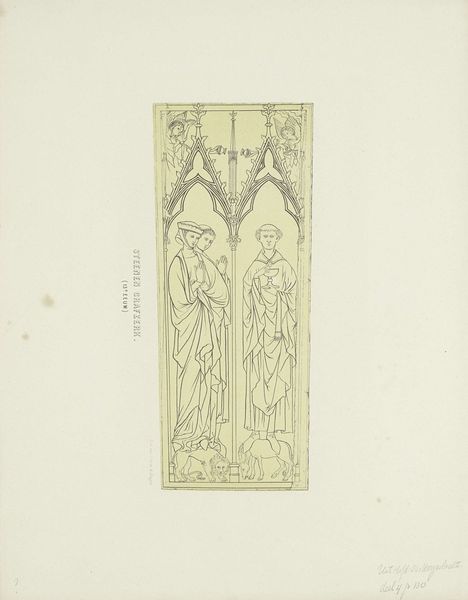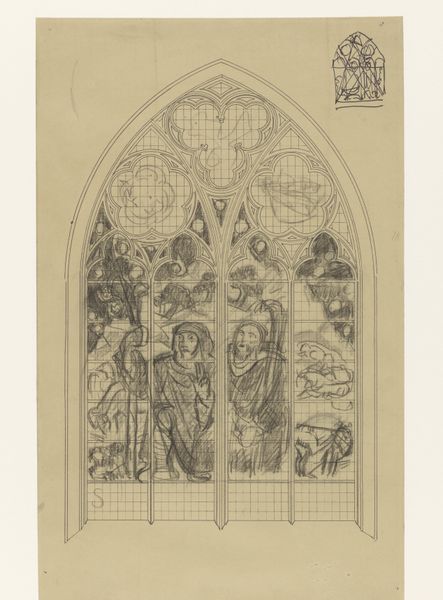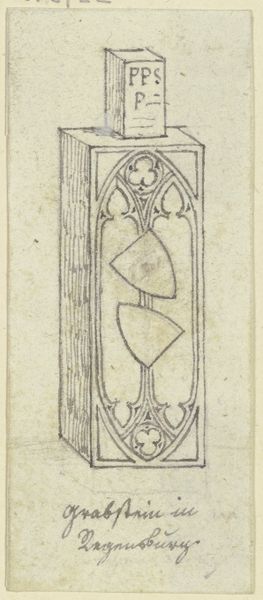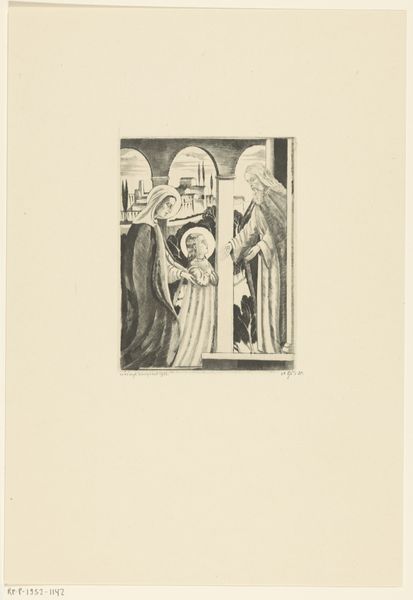
Dimensions: height 207 mm, width 120 mm
Copyright: Rijks Museum: Open Domain
Curator: My first impression is one of hushed reverence, like peering into a miniature stained-glass window. Editor: Indeed. We’re looking at an Ex Libris designed in 1932 by Kornél Révész for Hanna Ráczné Zerkowitz. The medium is a linocut print, so quite different from actual stained glass. Curator: The choice of the linocut, though, works wonderfully to evoke that feeling. The sharp, defined lines, and blocks of color feel very medieval. And what’s interesting is the central female figure surrounded by flowers. Editor: Absolutely. Given the Art Nouveau influences evident here, particularly in the decorative borders and flowing lines, one can’t help but see it as a romantic reimagining of the medieval. It’s clearly meant to imbue the owner’s books with an air of delicate sophistication and timelessness. The ‘Ex Libris’ inscription itself announces ownership. Curator: It feels very personal, an announcement of refined sensibilities. The lilies in her arms usually speak of purity, but their symbolic charge may have been updated, given new psychological interpretations during this period. I see this combined with the roses, creating a beautiful, albeit somewhat bittersweet, evocation of femininity and cultivated intelligence. Editor: The choice of flora certainly indicates a specific desired persona, a calculated message in a world shaped by post-war anxieties and changing social dynamics. This small print almost functions as a statement of identity within a shifting cultural landscape. It's like planting a flag that whispers "Here, I belong". Curator: I love how such a modest, personal object becomes a lens through which to examine grander themes of identity and historical moment. The symbol carries not just the identity of the individual, but the mark of a generation. Editor: Exactly, seeing how artists and designers navigated this interwar period opens the way to greater understanding, particularly concerning how notions of femininity were shaped and projected during an era of massive cultural change. Curator: So, while a miniature work, this little linocut print speaks volumes about the power of symbols and their endurance across time. Editor: And also demonstrates the fascinating ways individuals seek to establish their presence, their story within broader history.
Comments
No comments
Be the first to comment and join the conversation on the ultimate creative platform.
